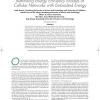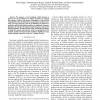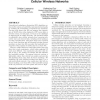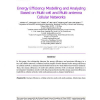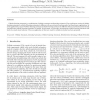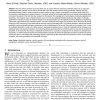106
Voted
CORR
2011
Springer
14 years 4 months ago
2011
Springer
Heterogeneous base stations (e.g. picocells, microcells, femtocells and distributed antennas) will become increasingly essential for cellular network capacity and coverage. Up unt...
127
click to vote
NETWORK
2011
14 years 7 months ago
2011
The continuous increase in energy consumption by cellular networks requires rethinking their energy efficiency. Current research indicates that one third of operating energy could...
129
Voted
GLOBECOM
2010
IEEE
14 years 9 months ago
2010
IEEE
We propose a novel technique called dimming to improve the energy efficiency of cellular networks by reducing the capacity, services, and energy consumption of cells without turnin...
122
Voted
ICUMT
2009
14 years 10 months ago
2009
Uplink users in cellular networks, such as UMTS/ HSPA, located at the edge of the cell generally suffer from poor channel conditions. Deploying intermediate relay nodes is seen as ...
141
Voted
GLOBECOM
2009
IEEE
14 years 10 months ago
2009
IEEE
Today, it is well understood that interference poses the main capacity limitation and thus challenge for future cellular networks. A promising concept that addresses interference i...
139
click to vote
IMC
2010
ACM
14 years 10 months ago
2010
ACM
Network-level redundancy elimination (RE) algorithms reduce traffic volume on bandwidth-constrained network paths by avoiding the transmission of repeated byte sequences. Previous...
127
click to vote
ITIIS
2010
14 years 11 months ago
2010
In this paper, the relationship between the energy efficiency and spectrum efficiency in a two-cell cellular network is obtained, and the impact of multi-antenna on the energy eff...
143
click to vote
AUTOMATICA
2008
14 years 11 months ago
2008
Cellular learning automata is a combination of cellular automata and learning automata. The synchronous version of cellular learning automata in which all learning automata in dif...
147
click to vote
COMCOM
2002
15 years 7 days ago
2002
Recent growth in cellular networks has motivated research on broadband access technologies for the support of diverse services over wireless networks. Wireless Asynchronous Transf...

